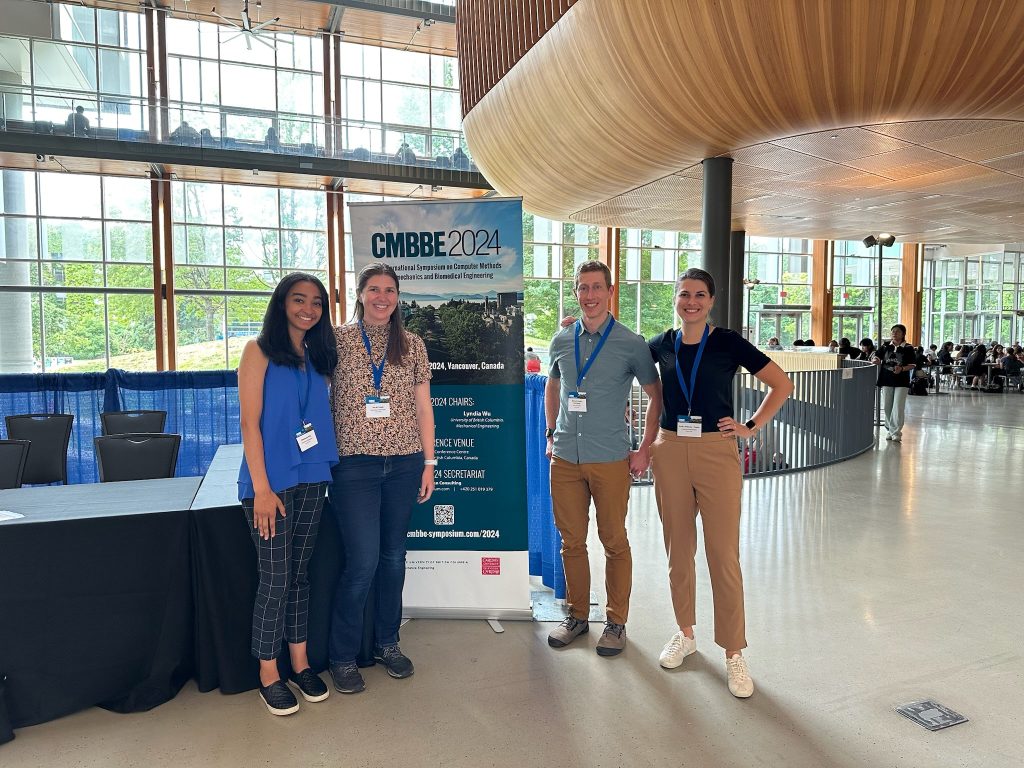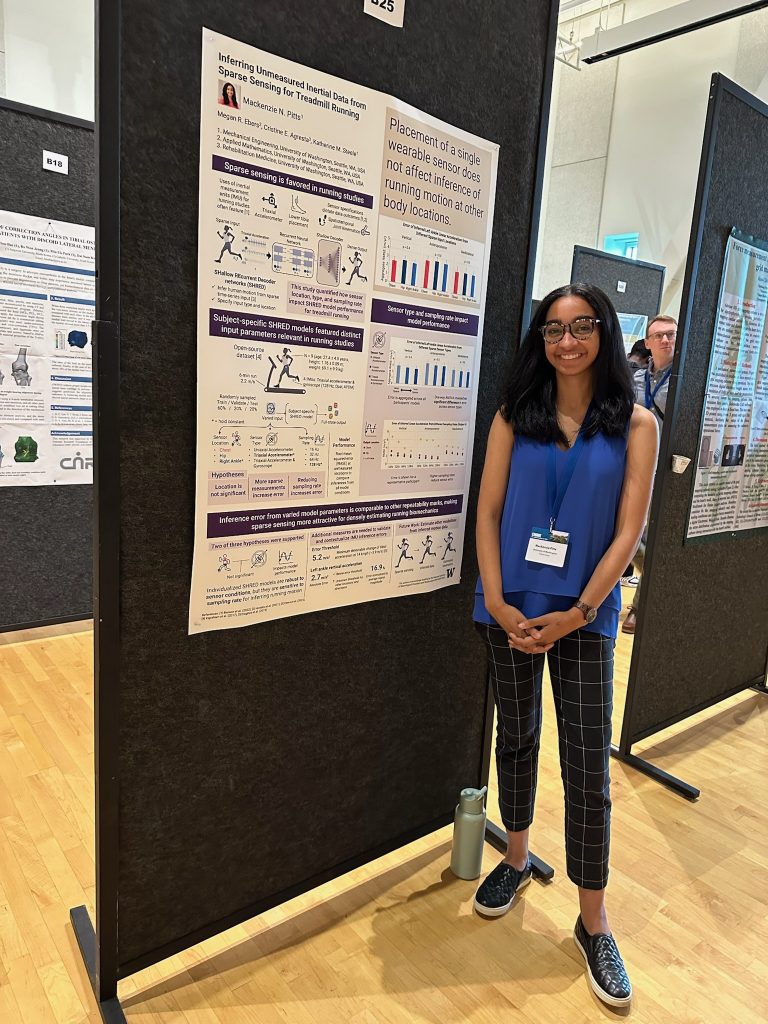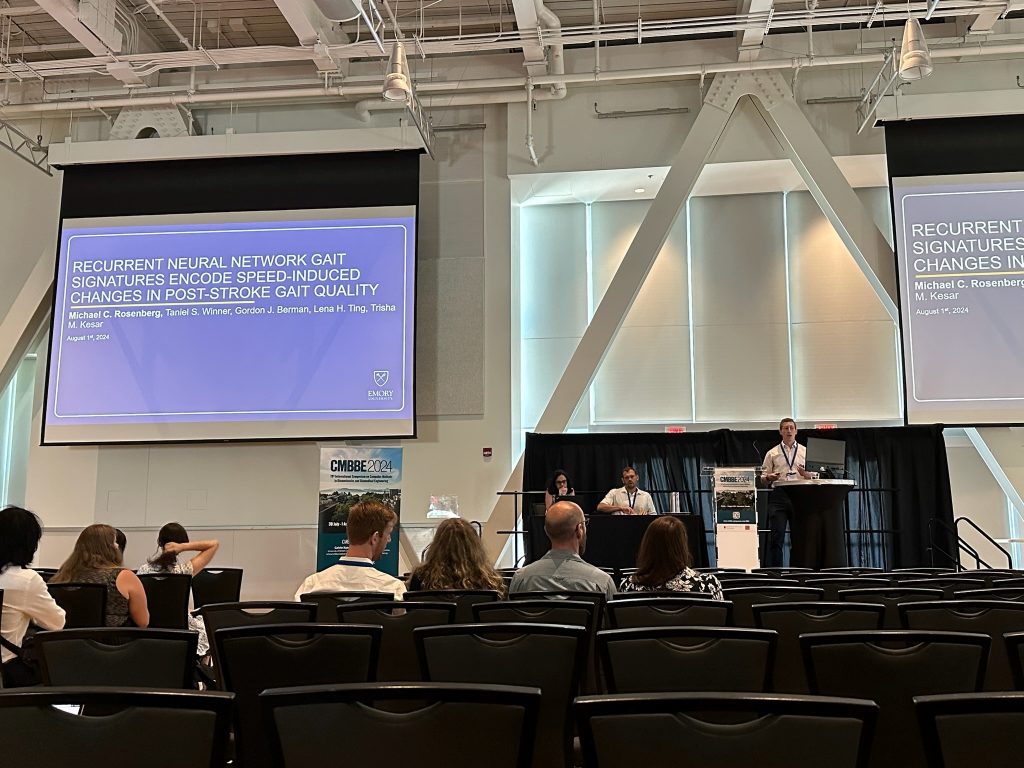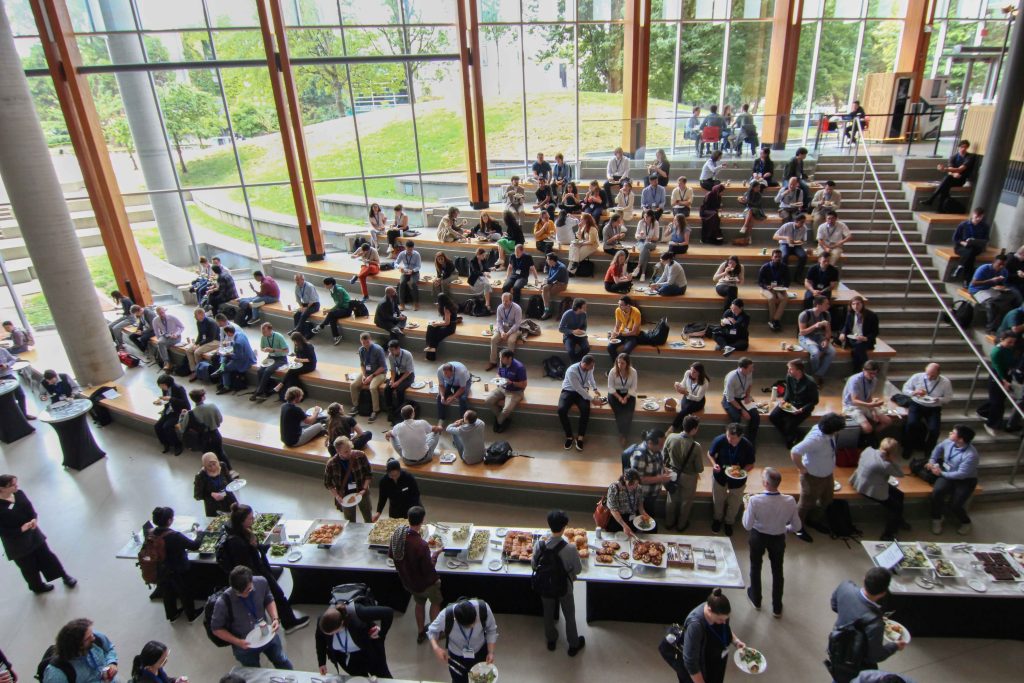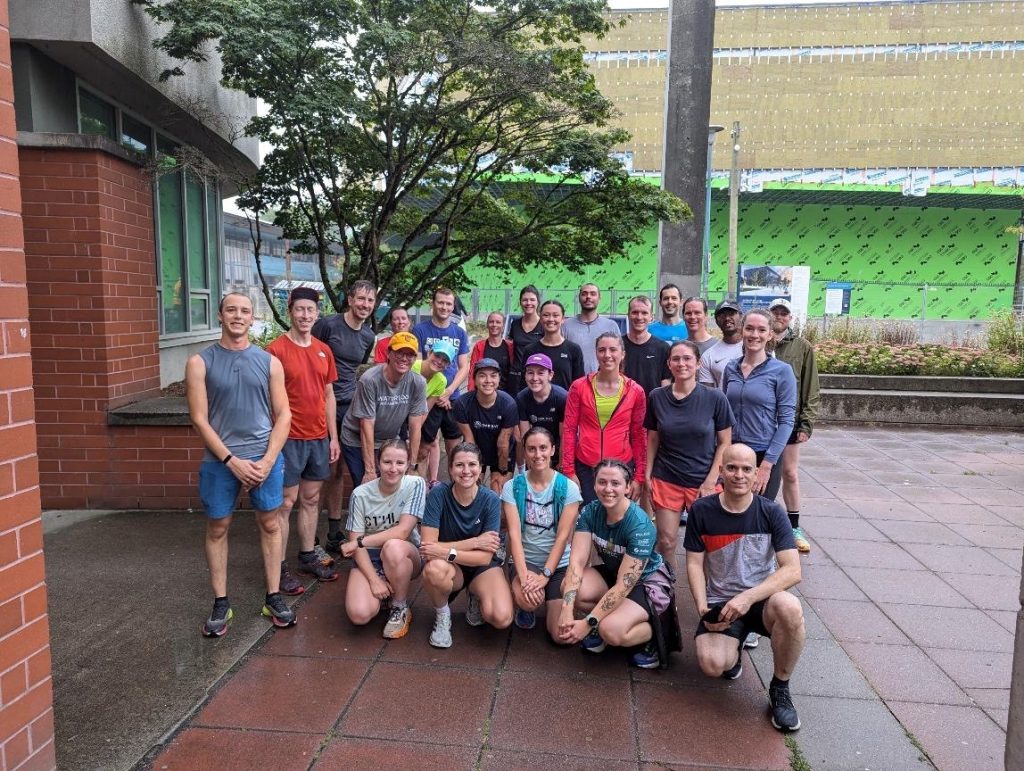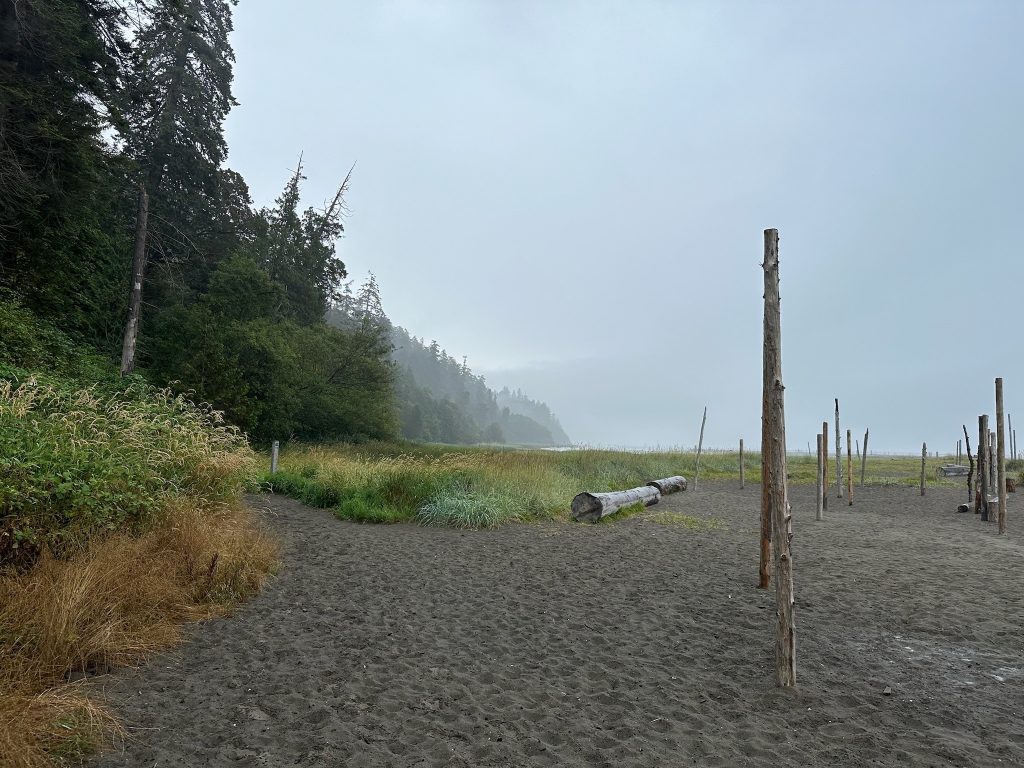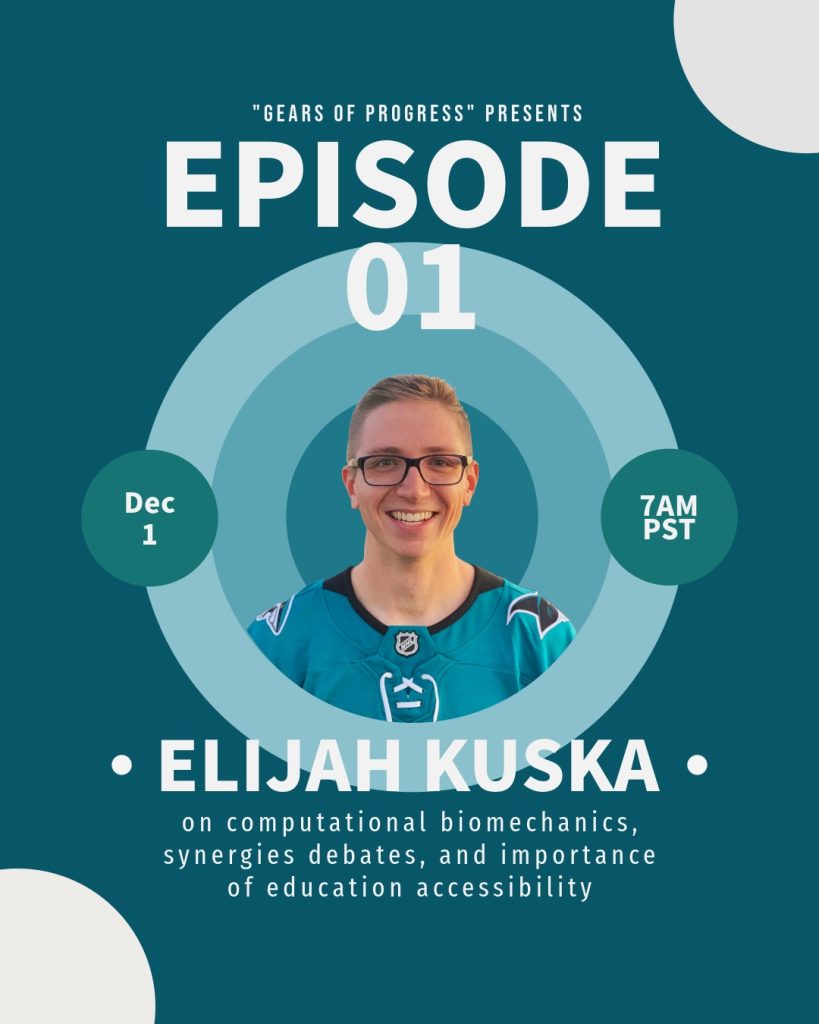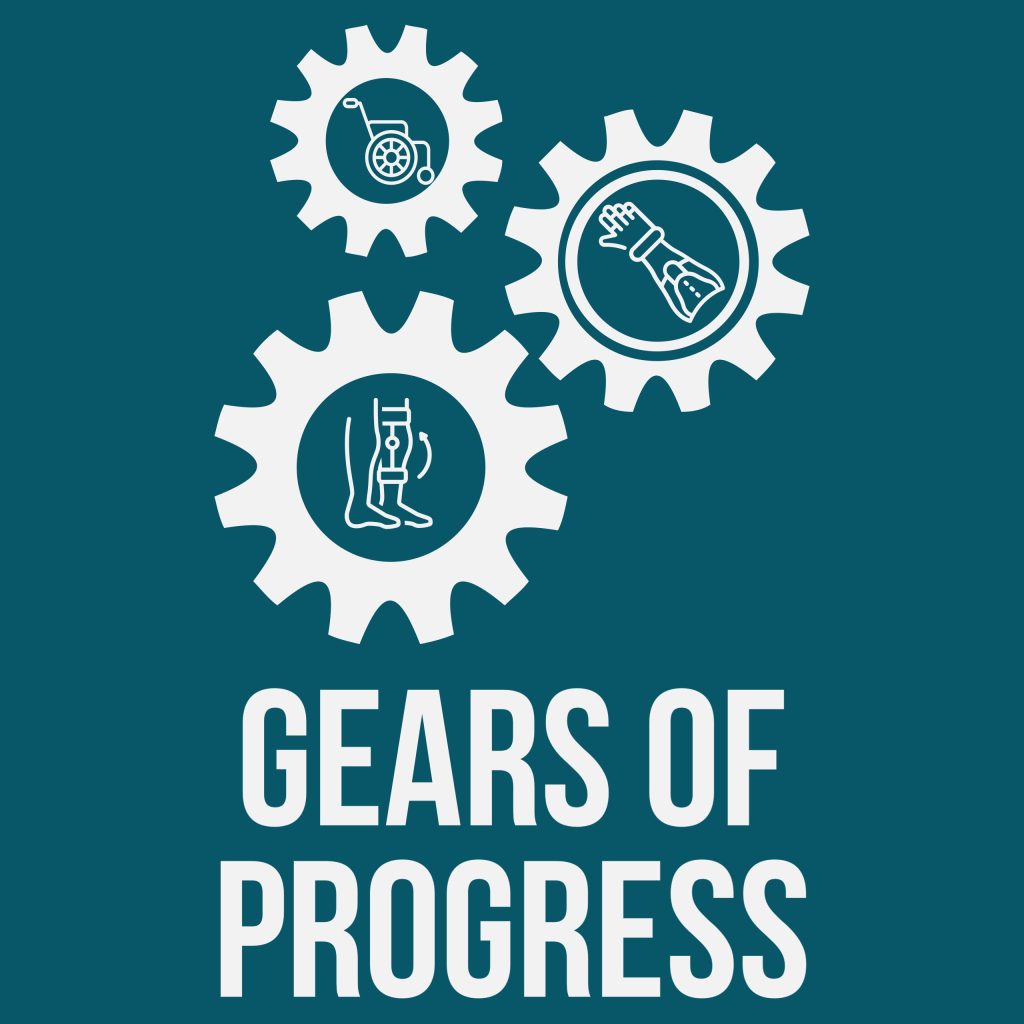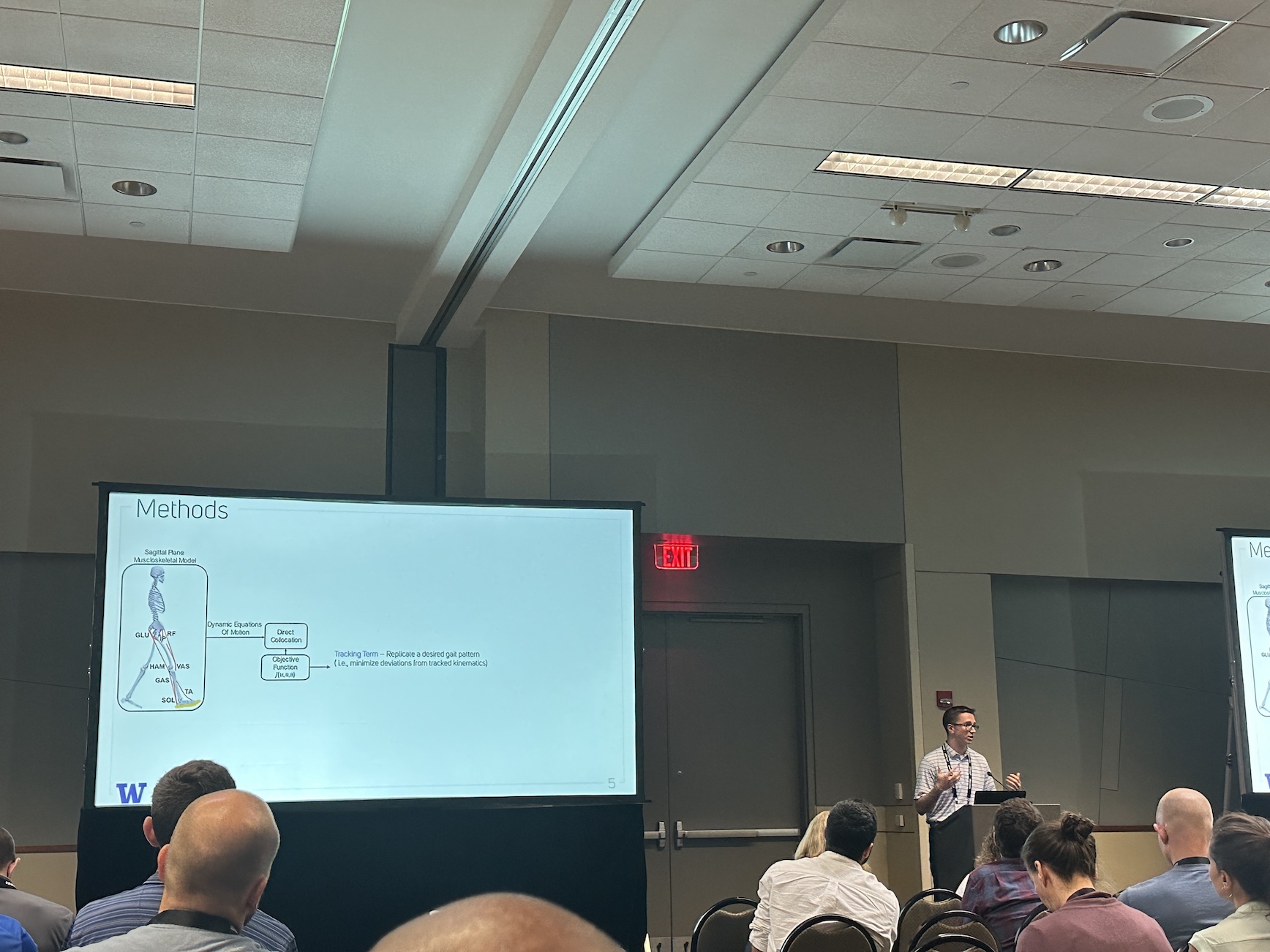Journal Article in Journal of Biomechanics
Quantifying individualized rehabilitation responses and optimizing therapy for each person is challenging. For interventions like treadmill training, there are multiple parameters, such as speed or incline, that can be adjusted throughout sessions.
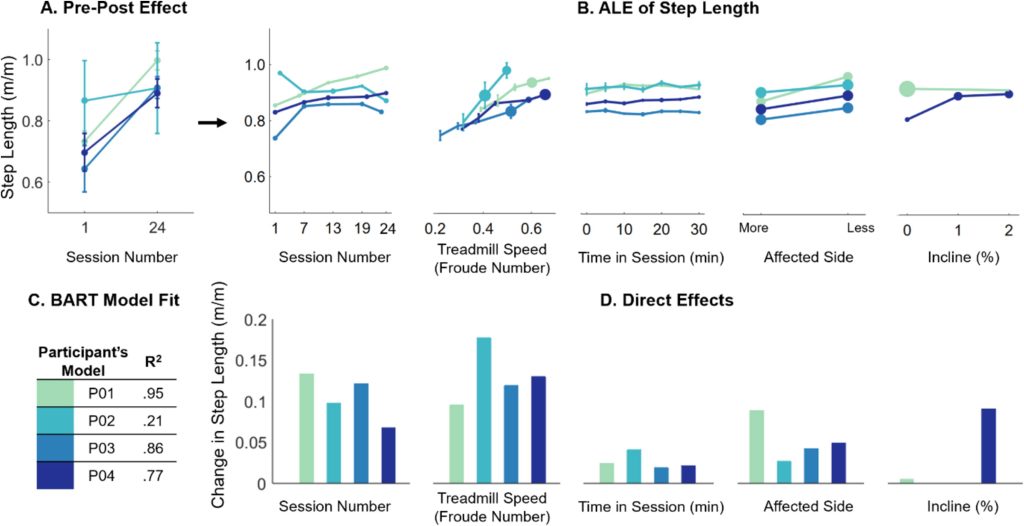 Aim: This study evaluates if causal modeling and Bayesian Additive Regression Trees (BART) can be used to accurately track the direct effects of treadmill training on gait.
Aim: This study evaluates if causal modeling and Bayesian Additive Regression Trees (BART) can be used to accurately track the direct effects of treadmill training on gait.
Methods: We developed a Directed Acyclic Graph (DAG) to specify the assumed relationship between training input parameters and spatiotemporal outcomes during Short Burst Locomotor Treadmill Training (SBLTT), a therapy designed specifically for children with cerebral palsy (CP). We evaluated outcomes after 24 sessions of SBLTT for simulated datasets of 150 virtual participants and experimental data from four children with CP, ages 4–13 years old. Individual BART models were created from treadmill data of each step.
Results: Simulated datasets demonstrated that BART could accurately identify specified responses to training, including strong correlations for step length progression (R2 = 0.73) and plateaus (R2 = 0.87). Model fit was stronger for participants with less step-to-step variability but did not impact model accuracy. For experimental data, participants’ step lengths increased by 26 ± 13 % after 24 sessions. Using BART to control for speed or incline, we found that step length increased for three participants (direct effect: 13.5 ± 4.5 %), while one participant decreased step length (−11.6 %). SBLTT had minimal effects on step length asymmetry and step width.
Interpretation: Tools such as BART can leverage step-by-step data collected during training for researchers and clinicians to monitor progression, optimize rehabilitation protocols, and inform the causal mechanisms driving individual responses.
CMBBE 2024 Recap
Members of the Steele Lab traveled to Vancouver, BC for the 19th International Symposium on Computer Methods in Biomechanics and Biomedical Engineering (CMBBE) hosted by the University of British Columbia.
PhD candidate, Mackenzie Pitts, gave a poster presentation on “Inferring Unmeasured Inertial Data from Sparse Sensing for Treadmill Running”. Steele Lab Alumni and Post-Doctoral Research Fellow at Emory University, Michael Rosenberg, gave a podium presentation titled “Recurrent Neural Network Gait Signatures Encode Speed-Induced Changes in Post-Stroke Gait Quality.”
In addition to sharing their research at the conference, the Steele Lab enjoyed connecting with fellow biomechanics and biomedical engineering researchers as well as exploring the beautiful campus at UBC.
EC Kuska, KM Steele (2024) “Does crouch alter the effects of neuromuscular impairments on gait? A simulation study”
Journal Article in Journal of Biomechanics
Cerebral palsy (CP) is a neurologic injury that impacts control of movement. Individuals with CP also often develop secondary impairments like weakness and contracture. Both altered motor control and secondary impairments influence how an individual walks after neurologic injury. However, understanding the complex interactions between and relative effects of these impairments makes analyzing and improving walking capacity in CP challenging.
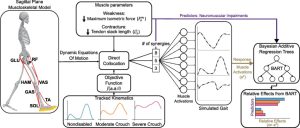 Aim: The purpose of this study was to investigate the interactions between neuromuscular impairments and gait in CP.
Aim: The purpose of this study was to investigate the interactions between neuromuscular impairments and gait in CP.
Methods: We used a sagittal-plane musculoskeletal model and neuromuscular control framework to simulate crouch and nondisabled gait. We perturbed each simulation by varying the number of synergies controlling each leg (altered control), and imposed weakness and contracture. A Bayesian Additive Regression Trees (BART) model was also used to parse the relative effects of each impairment on the muscle activations required for each gait pattern.
Results: By using these simulations to evaluate gait-pattern specific effects of neuromuscular impairments, we identified some advantages of crouch gait. For example, crouch tolerated 13 % and 22 % more plantarflexor weakness than nondisabled gait without and with altered control, respectively. Furthermore, BART demonstrated that plantarflexor weakness had twice the effect on total muscle activity required during nondisabled gait than crouch gait. However, crouch gait was also disadvantageous in the presence of vasti weakness: crouch gait increased the effects of vasti weakness on gait without and with altered control.
Interpretation: These simulations highlight gait-pattern specific effects and interactions between neuromuscular impairments. Utilizing computational techniques to understand these effects can elicit advantages of gait deviations, providing insight into why individuals may select their gait pattern and possible interventions to improve energetics.
“Gears of Progress” Podcast Launch!
Lab member, Sasha Portnova, launched a new podcast on research in rehabilitation and assistive technologies. The first episode features Steele Lab Alumni, Elijah Kuska, with a conversation on computational biomechanics, synergies debates, and the importance of education accessibility.
Name: Gears of Progress
Platforms: Spotify, Apple Podcasts, Amazon Music, Castbox
Podcast launch date: Dec 1
Release frequency: bi-weekly on Fridays
Theme: Podcast about research and innovations in rehabilitation engineering and assistive technologies aimed to improve accessibility for people with disabilities. Every episode will feature engineers, medical professionals, end-users, and organizations who focus on improving the health and well-being of individuals with disabilities. We will be covering topics such as emerging tech, outcome measures, medical practice, public policy, accessibility education, and so much more!
Twitter: https://twitter.com/GearsOfProgress
ASB 2023 Recap
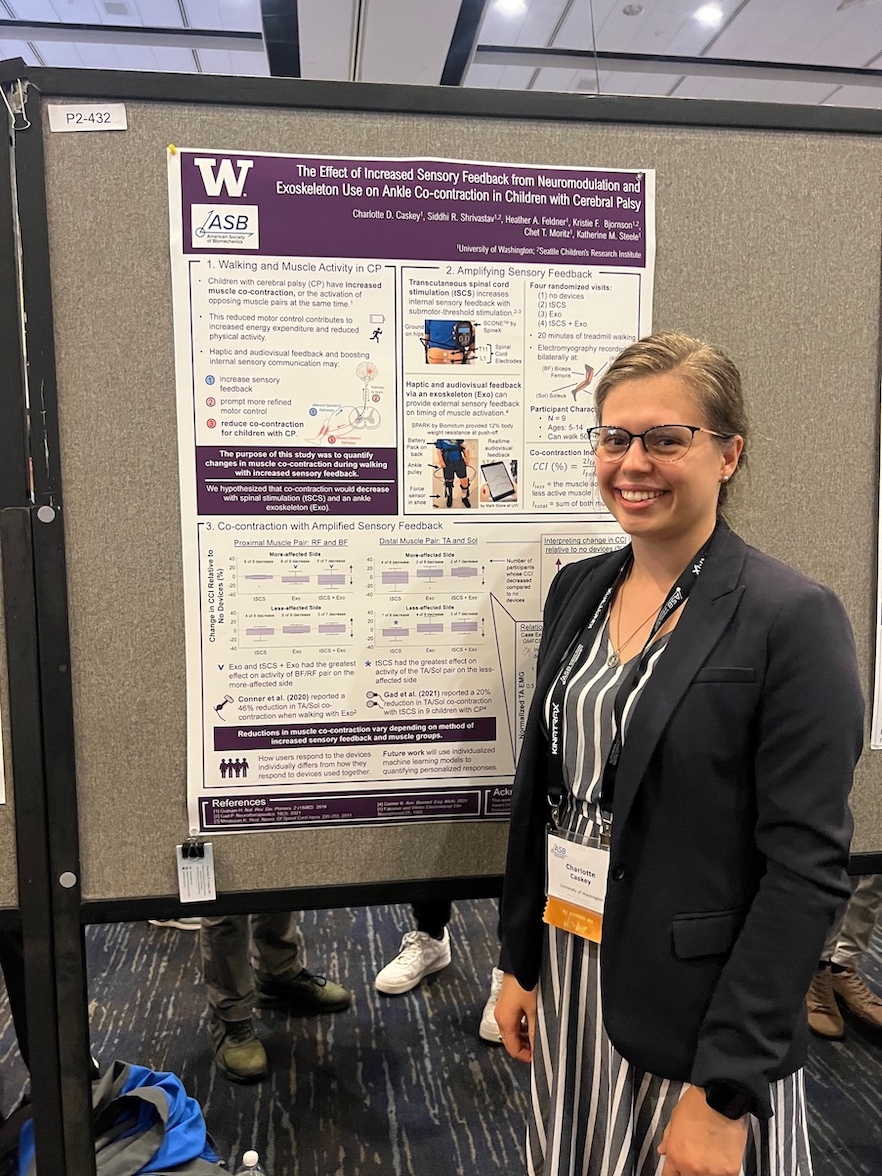 Four members of our lab – Kat, Elijah, Charlotte, & Mackenzie – attended ASB 2023 on August 8-11 in Knoxville, TN.
Four members of our lab – Kat, Elijah, Charlotte, & Mackenzie – attended ASB 2023 on August 8-11 in Knoxville, TN.
Elijah Kuska gave a podium presentation on “The effects of weakness, contracture, and altered control on walking energetics during crouch gait.”
Charlotte Caskey gave a poster presentation on “The effect of increased sensory feedback from neuromodulation and exoskeleton use on ankle co-contraction in children with cerebral palsy.”
Kat Steele co-hosted a workshop on “Writing a Successful NIH R01 Proposal.”
ASB 2024 will be hosted August 5-8, in Madison, WI.

